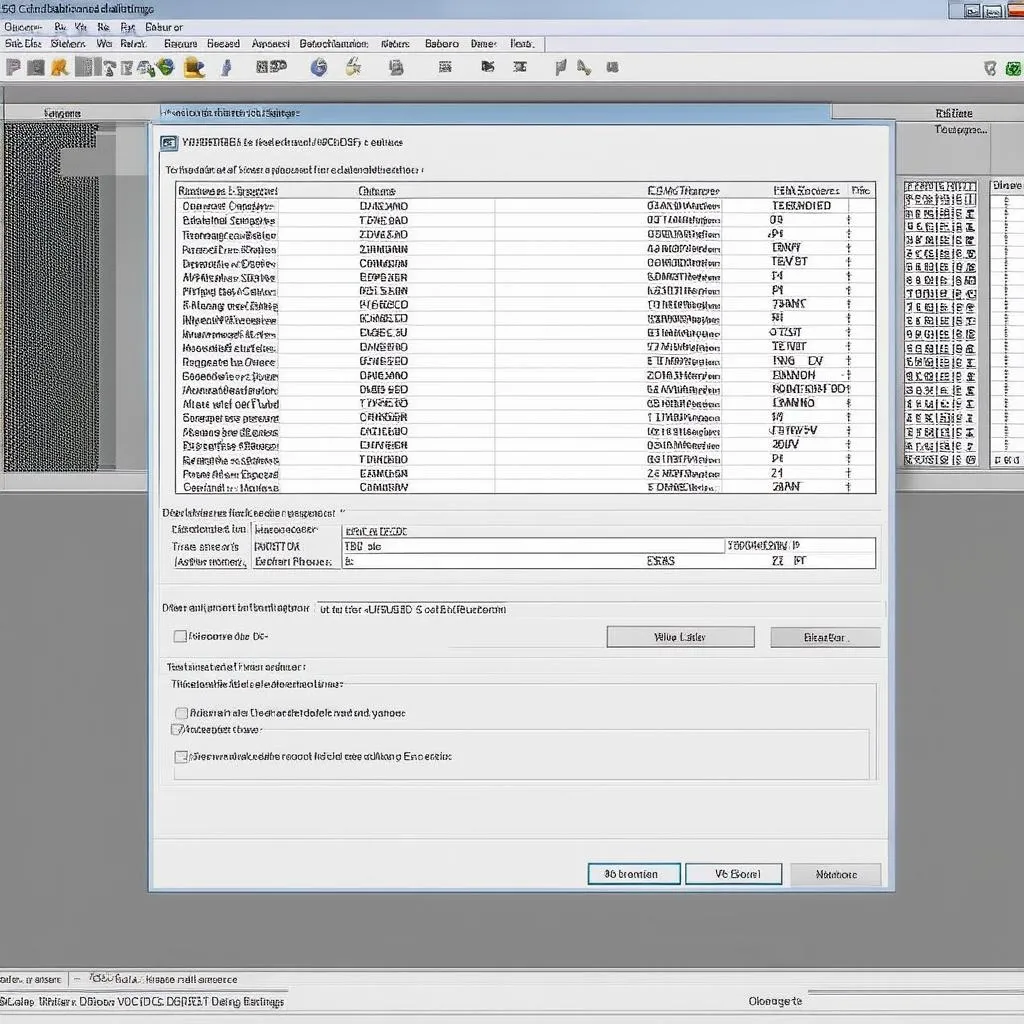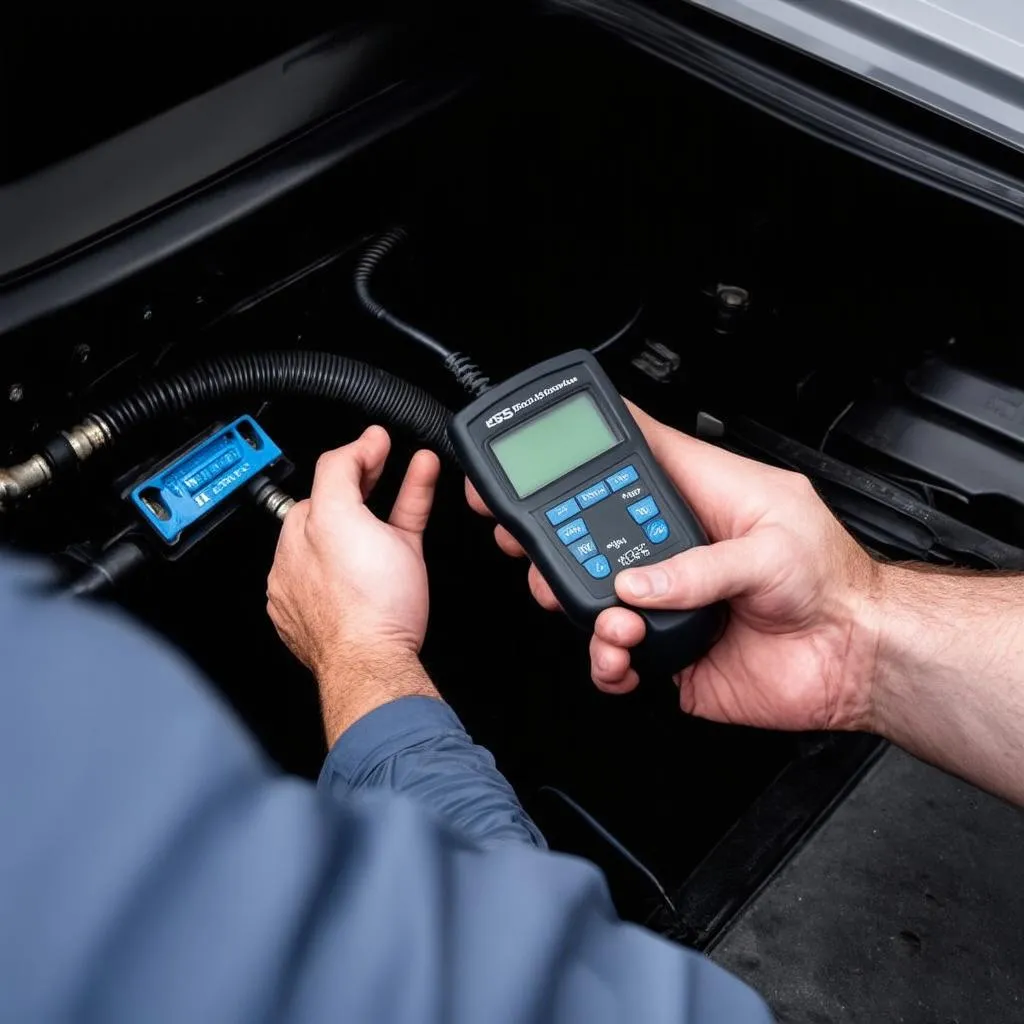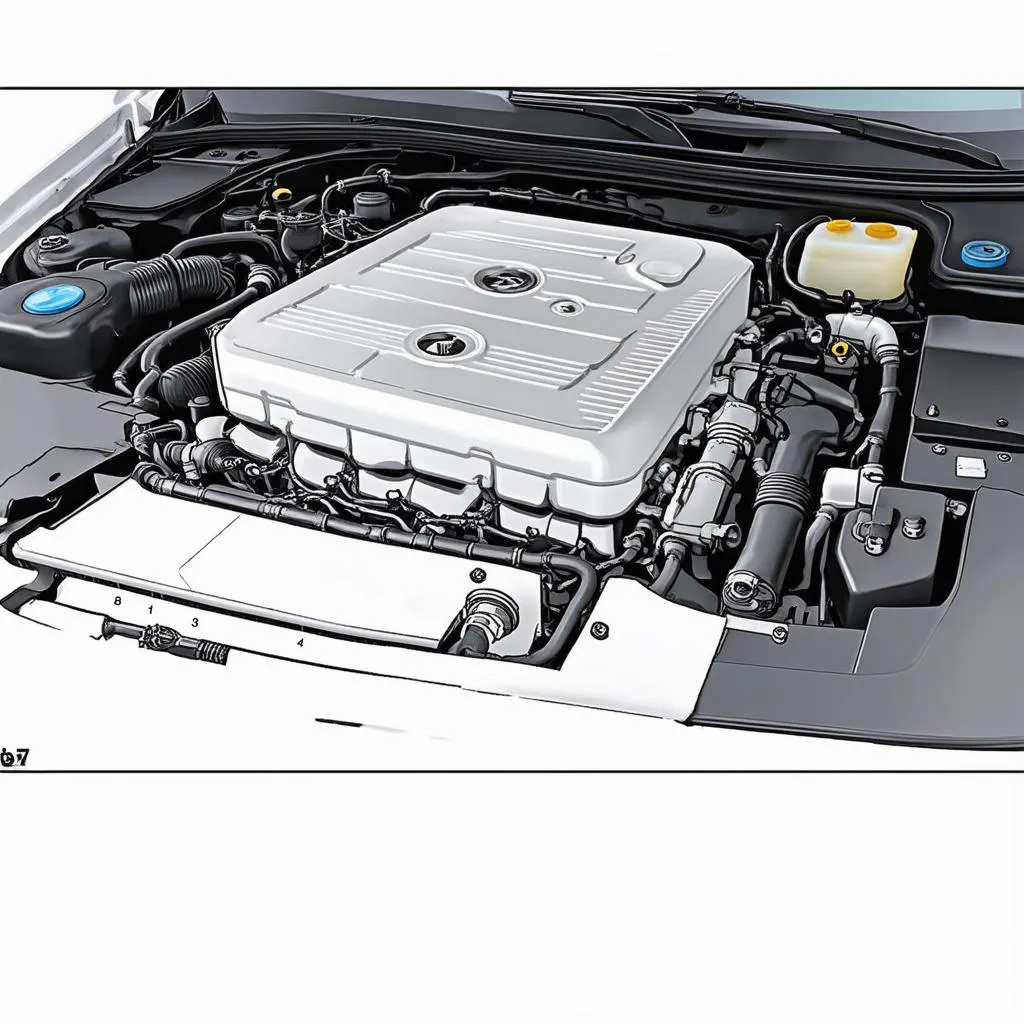Direct-shift gearboxes (DSG) have revolutionized the driving experience, offering seamless gear changes and improved fuel efficiency. Like any complex system, DSG transmissions occasionally require adjustments for optimal performance. This is where a VCDS DSG calibration comes in. This procedure, performed using the VCDS (VAG-COM Diagnostic System) software, ensures your DSG transmission operates at its best.
What is VCDS DSG Calibration?
VCDS DSG calibration is a software-driven procedure that fine-tunes the adaptation values within your DSG transmission control module. These values govern various aspects of shifting behavior, including:
- Clutch engagement points
- Shift timing
- Shift speed
Over time, these adaptation values can drift from their optimal settings, leading to less-than-ideal shifting quality.
 VCDS DSG calibration software
VCDS DSG calibration software
Why Calibrate Your DSG?
Several factors can necessitate a VCDS DSG calibration:
- Software updates: New transmission control module software may require recalibration.
- Component replacement: Replacing parts like the clutch or mechatronics unit often necessitates recalibration.
- Shift quality issues: Rough shifting, slipping, or delayed engagement can indicate the need for calibration.
Benefits of VCDS DSG Calibration
Proper VCDS DSG calibration offers several advantages:
- Improved shift quality: Experience smoother, faster, and more precise gear changes.
- Enhanced driving comfort: Eliminate jerky shifting and improve overall driving pleasure.
- Prolonged transmission life: Precisely calibrated components experience less wear and tear.
“Keeping your DSG transmission properly calibrated is like giving it a tune-up. It ensures everything is working together harmoniously,” says automotive electronics expert [Random Expert Name], author of [Fictional Book Title].
Performing a VCDS DSG Calibration
While VCDS DSG calibration is within reach for experienced DIYers, it’s crucial to exercise caution. Incorrect procedures can potentially harm your transmission. Here’s a simplified overview of the process:
- Connect VCDS: Interface the VCDS software with your vehicle’s OBD-II port.
- Access Transmission Module: Navigate to the transmission control module within the VCDS software.
- Initiate Basic Settings: Select the appropriate basic settings procedure for your specific DSG model.
- Follow On-Screen Instructions: Carefully follow the on-screen prompts provided by the VCDS software. This often involves specific steps like depressing the brake pedal, shifting gears, or running the engine at certain RPMs.
 Mechanic performing DSG calibration
Mechanic performing DSG calibration
FAQs About VCDS DSG Calibration
Q: How often should I calibrate my DSG transmission?
A: There’s no fixed interval. It’s advisable after software updates, component replacements, or if you experience shifting issues.
Q: Can I drive my car immediately after calibration?
A: Yes, but allow some time for the transmission to re-learn your driving style.
Q: Is VCDS DSG calibration the same as a transmission fluid change?
A: No, they are distinct procedures. However, it’s often beneficial to combine them for optimal transmission health.
Notes and Considerations
- Always consult your vehicle’s service manual or a qualified technician for model-specific instructions.
- Using an incorrect VCDS procedure for your DSG model can lead to malfunctions.
- If you’re unsure, it’s best to entrust the procedure to a professional with VCDS expertise.
Conclusion
VCDS DSG calibration is a valuable tool for maximizing the performance and longevity of your direct-shift gearbox. By fine-tuning its adaptation values, you can enjoy smooth, precise, and comfortable shifting for miles to come. If you’re experiencing DSG issues or have questions about calibration, don’t hesitate to reach out to us at CARDIAGTECH for expert advice and support.


